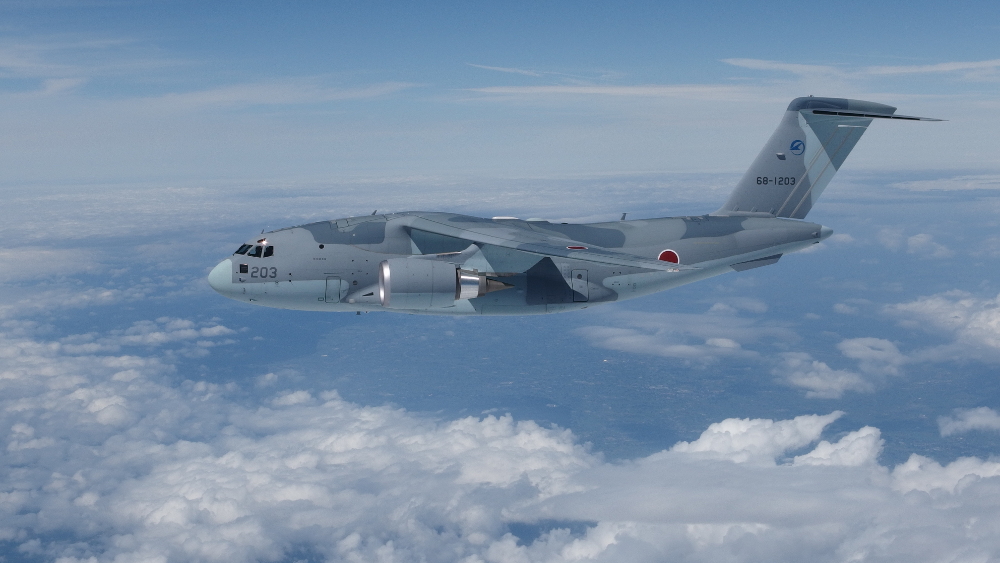SOURCE: RAUNAK KUNDE / NEWS BEAT / IDRW.ORG


India has formally requested Japan to submit a proposal for its Kawasaki C-2 military transport aircraft as part of the Indian Air Force’s (IAF) IL-76 replacement program, sources told idrw.org. The move comes as the IAF reevaluates its Medium Transport Aircraft (MTA) requirements, aiming to modernize its aging transport fleet, which includes the Soviet-era Ilyushin IL-76 and Antonov An-32 aircraft.
With the locally manufactured Airbus C-295M already set to replace the Avro HS-748 fleet, the IAF is exploring options to consolidate its tactical and strategic airlift needs, potentially using the C-295M to also phase out the An-32s while seeking a heavier platform like the C-2 to succeed the IL-76.
The Kawasaki C-2, developed by Kawasaki Aerospace for the Japan Air Self-Defense Force (JASDF), is a mid-size, twin-turbofan military transport aircraft designed for long-range, high-speed operations. Powered by General Electric CF6-80C2K turbofan engines, the C-2 boasts a maximum payload capacity of 36-37.6 tonnes, closely matching the 48-tonne payload of the older IL-76MD variant in service with the IAF. The aircraft can achieve a maximum speed of 890 km/h, a range of 6,500 km, and operate at a service ceiling of 12,200 meters, making it versatile for both tactical and strategic missions. Its ability to operate from short or unprepared runways further enhances its appeal for India’s diverse operational needs.
Japan has been actively seeking export opportunities for the C-2, and IAF officials speaking to idrw.org noted that the aircraft could meet the force’s requirements at a lower cost than competing options like the Airbus A400M. The C-2’s fuel-efficient CF6-80C2K engines offer a significant advantage over the IL-76’s older, less efficient D-30KP engines, which have contributed to reduced availability rates—reportedly dipping to 32.16% over the past decade due to maintenance and spare parts challenges following the Soviet Union’s collapse.
The IAF’s transport fleet currently comprises over 100 An-32s, 14 operational IL-76s, 11 C-17 Globemasters, 12 C-130J Super Hercules, and 56 Avro HS-748s, the latter being progressively replaced by the C-295M under a ?21,935-crore contract signed in 2021 with Airbus. The C-295M, with a payload capacity of 9.5 tonnes, is designed for tactical missions and is being assembled in Vadodara by Tata Advanced Systems Limited, with the first locally built unit expected by September 2026. Sources told idrw.org that the IAF now sees the C-295M as a potential replacement for the An-32 fleet as well, given the latter’s age—most have been in service since the 1980s—and diminishing operational readiness.
However, the IL-76, inducted between 1985 and 1989, remains a critical asset for heavy-lift strategic airlift, despite its advancing age. The IAF plans to retire some of these aircraft starting in 2030, as they will have exceeded 40 years of service. In March 2024, the IAF approached Russia to explore extending the technical life of 11 IL-76MD aircraft, but the long-term solution lies in acquiring a modern replacement. The C-2’s payload capacity, while slightly below the IL-76MD’s, positions it as a viable candidate, especially given its modern design and operational efficiency.
The IAF’s MTA tender, initially aimed at replacing both the An-32 and IL-76 with a platform in the 18-30 tonne payload category, has seen interest from multiple contenders, including Lockheed Martin’s C-130J-30, Embraer’s KC-390, and Airbus’s A400M. However, the A400M, with a 37-tonne payload, exceeds the MTA’s stated requirements, making it a more direct competitor to the IL-76’s role. The Kawasaki C-2, with its 36-37.6 tonne capacity, aligns more closely with the IL-76MD’s capabilities while offering a cost advantage over the A400M, according to IAF officials cited by idrw.org.
The A400M, while versatile with a range of 8,900 km and the ability to carry heavy, outsized loads, comes with a higher price tag and operational costs. In contrast, the C-2’s fuel-efficient engines and lower acquisition cost make it an attractive option for the IAF, which is balancing modernization with budget constraints. Japan’s willingness to export the C-2 also aligns with its broader defense export strategy, as seen in earlier attempts to market the aircraft to Saudi Arabia.
NOTE: Article cannot be reproduced without written permission of idrw.org in any form even for YouTube Videos to avoid Copy right strikes. Websites doing illegal reproductions will get DMCA and Legal Notices.